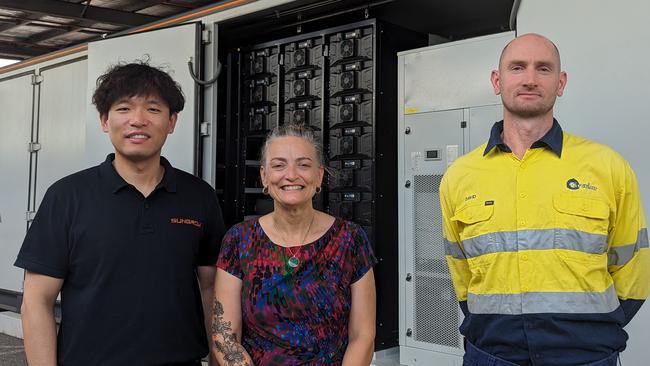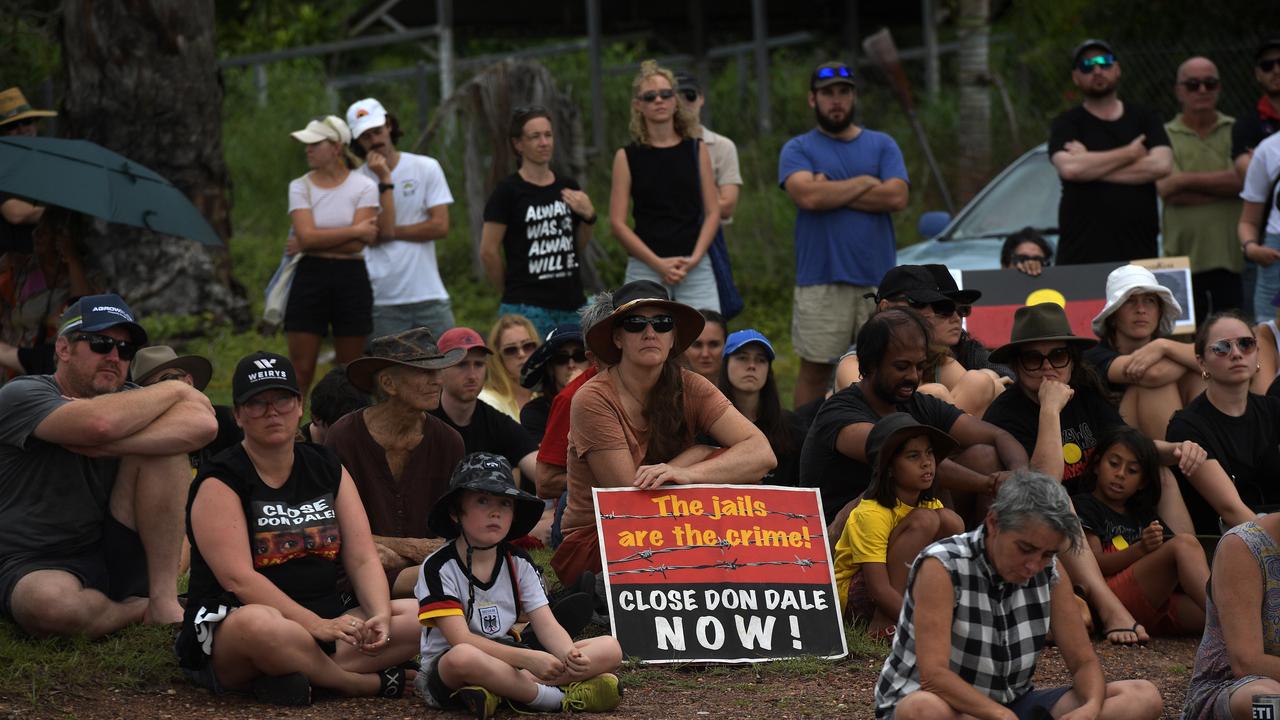NT solar: Tiwi Islands to begin production by May, no timeline on stranded farms
The Tiwi Islands’ largest community will in a matter of months become almost energy self-sufficient, but a trio of large solar farms in the Top End remain effectively stranded, with no end in sight.

Politics
Don't miss out on the headlines from Politics. Followed categories will be added to My News.
Wurrumiyanga, the largest community on the Tiwi Islands, will reduce its reliance on diesel by an estimated 519,000 litres per annum when a new battery and solar array becomes operational in the coming months.
Renewables Minister Kate Worden unveiled the 1.75 MVA battery at solar manufacturer 5B’s Berrimah depot on Tuesday.
Once it is dispatched to Wurrumiyanga, which already has some small-scale solar generation, it will be connected to a 1.1MW solar array, which has already been installed.
The battery will be able to provide 3MWh of storage capacity, meaning that Wurrumiyanga, with a population of about 1800 residents, would be energy sufficient for most of the day – provided the sun is shining.
The Northern Territory Government estimates the $6.1m project, once it is operational in approximately May, will save 519,000 litres of diesel consumption per annum.
“The Wurrumiyanga Solar Infill and Energy Storage Pilot Project will give the community cleaner power and reduce the need to rely on diesel generators,” she said.
“We are working towards our target of net zero emissions by 2050 and projects like this will play a significant role in achieving this.”

The progression of the Wurrumiyanga solar farm and battery storage is a rare ray of good news amid darkening clouds shrouding the government’s solar strategy.
Last week, it was revealed that solar farms at Batchelor and Manton Dam remained stranded four years after they were constructed, while a third, larger farm at Katherine was operating at only 25 per cent of its peak capacity.
The Katherine facility is only able to feed what little energy it currently can into the grid because of a co-located 6MW storage battery, a feature not present at Batchelor or Manton Dam.
The issues with the three farms have been caused due to a lack of stabilisers in the Territory’s energy grid – if the farms generate too much electricity during troughs in energy consumption, such as the middle of the day, the system shuts down to preserve its infrastructure.
Ms Worden was unable to say when the solar farms would be able to ramp up production.
“We need to make sure that we are able to commission them and keep the stability in the grid,” Ms Worden said.
“There have been some technical issues that are being worked through but we’ve got that one [Katherine] at 25 per cent and we hope to grow that very shortly up to around 75 per cent.
“The other two are going through their very robust stages to make sure that when they do eventually plug in that they don’t destabilise the system.”
Ms Worden said that the government could “learn a lot from the way that these projects have been rolled out”.





